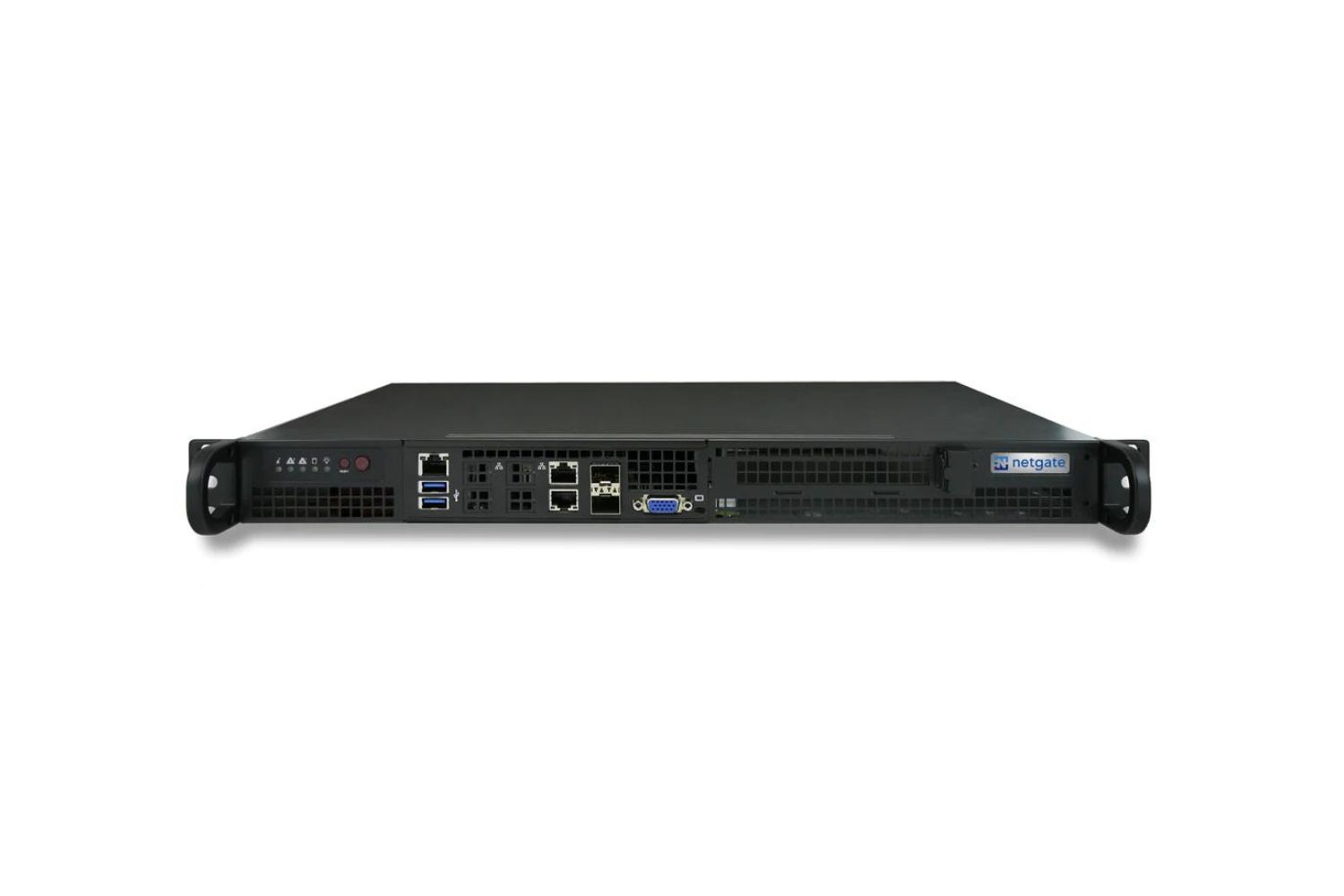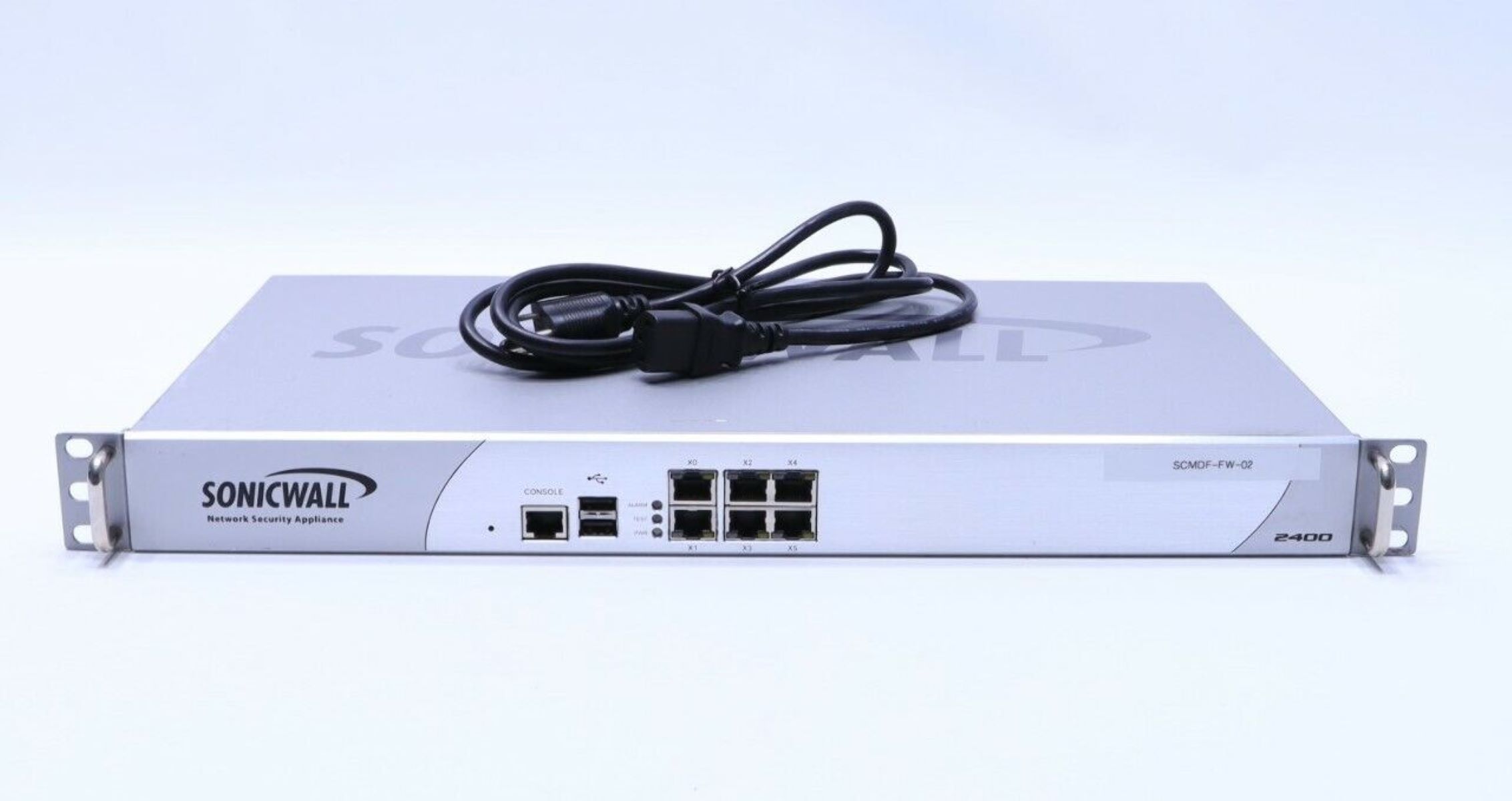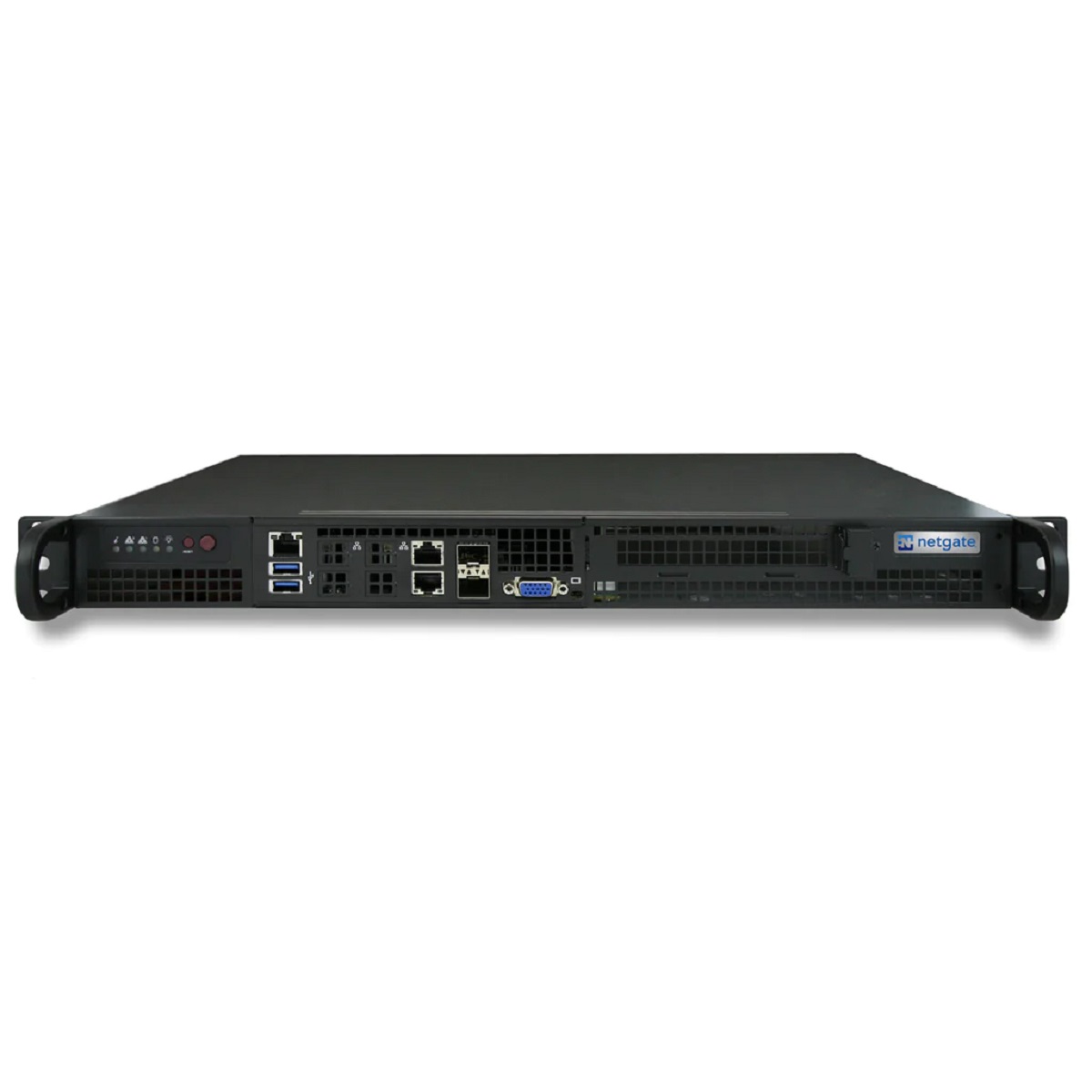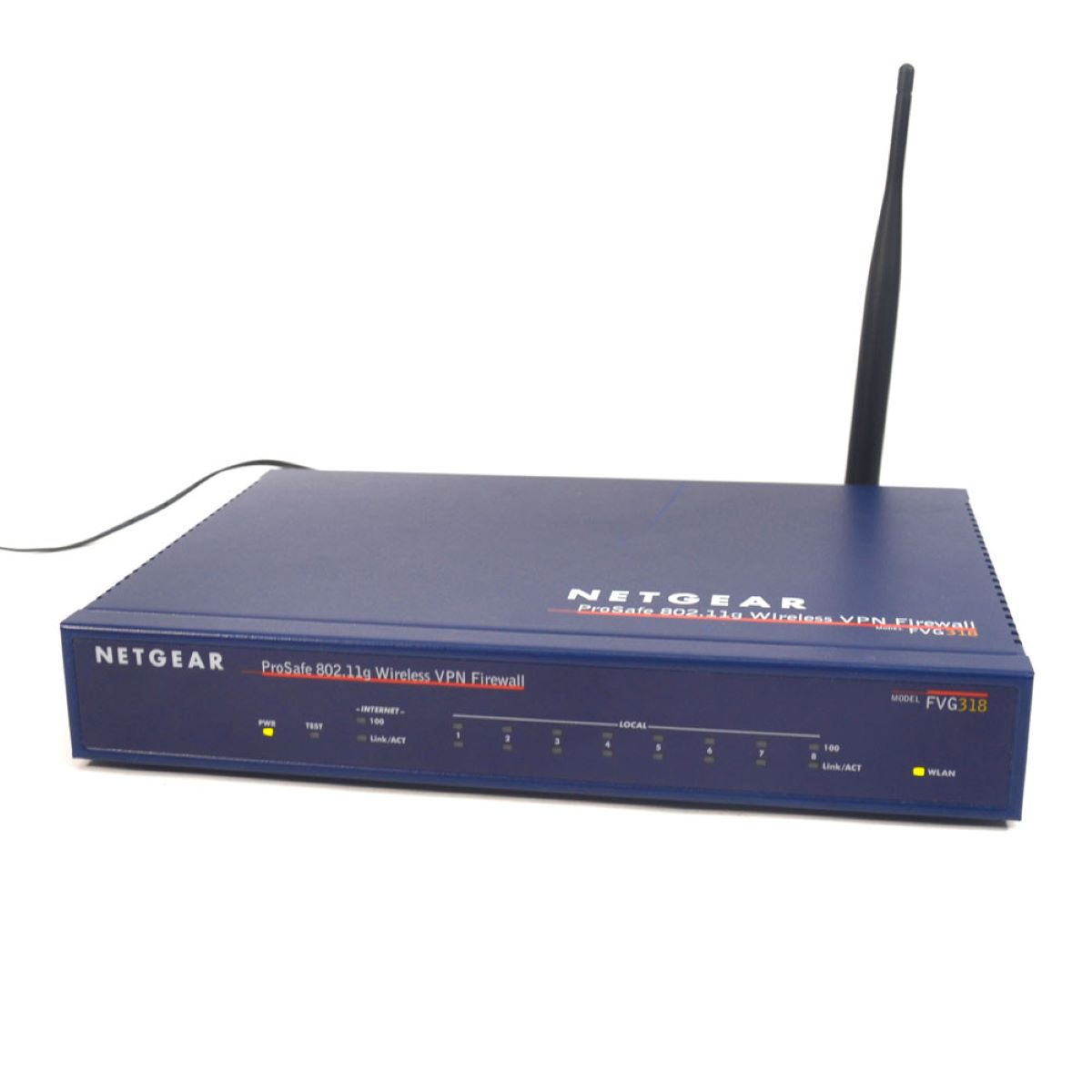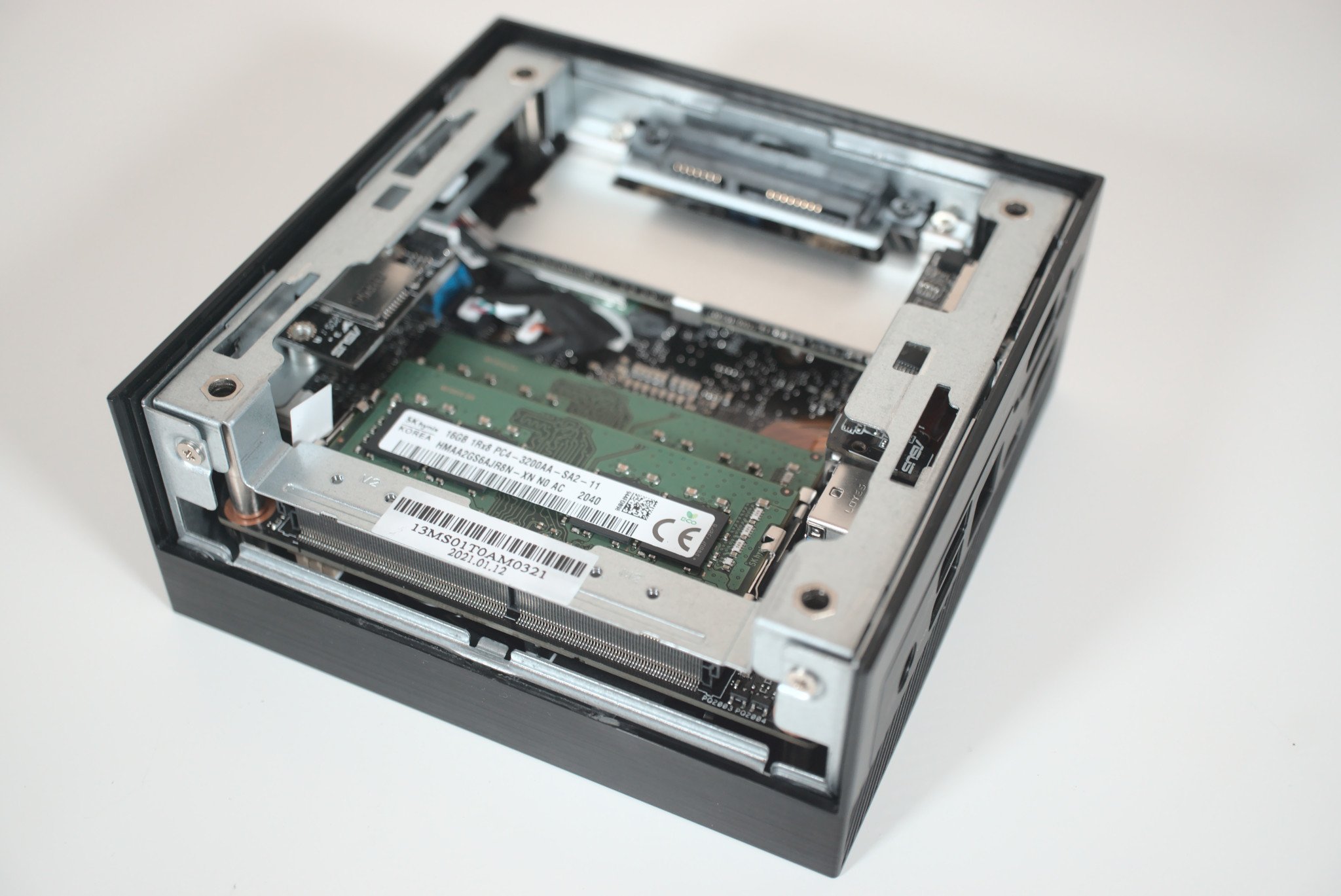Introduction
Welcome to our guide on determining the optimal amount of RAM for pfSense! As more and more businesses and homes rely on pfSense for their network security and management needs, it becomes crucial to ensure that the hardware resources are appropriately allocated. One of the key components to consider is the amount of RAM that pfSense requires to function efficiently.
pfSense is an open-source firewall and routing platform that offers a range of features, such as VPN support, traffic shaping, and load balancing. It is highly customizable and can be used in various network setups, from small home networks to large enterprise deployments. To ensure smooth performance and effectively manage network traffic, allocating sufficient RAM is essential.
In this guide, we will explore the minimum RAM requirements for pfSense, as well as recommended RAM configurations for different network sizes. We will also discuss considerations for virtualized environments, as more companies choose to deploy pfSense as a virtual machine.
Before we delve into the specific RAM recommendations, it’s important to understand the role that RAM plays in pfSense’s performance. RAM, also known as memory, is a crucial resource that allows pfSense to store data and execute processes quickly. With sufficient RAM, pfSense can efficiently handle network traffic, perform logging and monitoring tasks, and execute firewall rules without slowing down the network.
Insufficient RAM can lead to performance bottlenecks, resulting in sluggish response times, dropped connections, and overall network instability. Therefore, it’s vital to assess your network’s demands and allocate an appropriate amount of RAM to ensure optimal pfSense performance.
What is pfSense?
pfSense is an open-source firewall and routing platform that is widely used for network security and management. Developed based on the FreeBSD operating system, pfSense offers a powerful and flexible solution for both small home networks and large enterprise deployments.
At its core, pfSense acts as a firewall, protecting the network from unauthorized access and potential threats. It achieves this by implementing a wide range of security measures, such as stateful packet inspection, virtual private network (VPN) support, and intrusion detection and prevention system (IDPS) capabilities.
However, pfSense goes beyond just being a firewall. It also serves as a routing platform, allowing for efficient traffic management and network segmentation. With features like traffic shaping, load balancing, and failover support, pfSense enables organizations to optimize their network performance and ensure high availability.
One of the key advantages of pfSense is its flexibility and extensibility. It provides a web-based graphical user interface (GUI) that simplifies the configuration and management of the firewall rules, VPN connections, and network settings. Moreover, pfSense supports the installation of custom packages, allowing users to enhance its capabilities with additional features like caching, proxying, and advanced monitoring.
pfSense is widely recognized and trusted in the networking community due to its reliability, security, and comprehensive feature set. It is frequently used in a variety of network setups, including:
- Home Networks: pfSense is an ideal choice for home users who want to improve the security and performance of their networks. It provides features like parental controls, content filtering, and VPN connectivity to safeguard personal information and ensure a smooth online experience.
- Small Businesses: Small businesses often rely on pfSense to protect their networks from cyber threats and manage their network traffic effectively. With its robust security features and intuitive management interface, pfSense offers an affordable yet powerful solution for network security.
- Medium to Large Enterprises: Due to its scalability and advanced features, pfSense is widely deployed in medium to large enterprises. It can handle high traffic loads, support complex network topologies, and provide granular control over network traffic, making it a popular choice for organizations of all sizes.
In summary, pfSense is a versatile firewall and routing platform that provides advanced security, routing, and management capabilities for networks of all sizes. Whether you need to safeguard your home network, secure your small business, or optimize the performance of a large enterprise network, pfSense offers the flexibility and features required to meet your networking needs.
Why is RAM important for pfSense?
RAM, or random access memory, plays a critical role in the performance and functionality of pfSense. It serves as a temporary storage space for the operating system, applications, and data that pfSense relies on to perform its network security and management tasks effectively. Here are a few key reasons why RAM is important for pfSense:
1. Processing Network Traffic: When network packets flow through pfSense, they need to be analyzed, filtered, and processed. This requires the firewall to hold various states and connections in memory for efficient packet inspection and routing. Sufficient RAM ensures that pfSense can handle high volumes of network traffic without experiencing bottlenecks or slowdowns, providing smooth and uninterrupted network connectivity.
2. Storing Firewall Rules: pfSense implements firewall rules to control the flow of network traffic, blocking unauthorized access and allowing only trusted connections. These rules are stored in RAM for quick access and evaluation. With more complex rule sets, larger amounts of RAM are essential to store and process the rules efficiently, ensuring accurate and secure network traffic management.
3. Accommodating Log and Monitoring Data: pfSense generates logs and monitoring data to provide valuable insights into network traffic, security incidents, and system health. These logs can consume a significant amount of memory, especially in networks with heavy traffic or sophisticated logging configurations. Adequate RAM allows pfSense to store and manage these logs effectively, facilitating troubleshooting, analysis, and performance monitoring.
4. Running Additional Services and Packages: pfSense offers the flexibility to install additional services and packages, such as caching proxies, VPN servers, and traffic monitoring tools. These services and packages require memory resources to operate efficiently. Having sufficient RAM ensures that these services can run smoothly without impacting the overall performance of pfSense or the network.
5. Virtualized Environments: Many organizations choose to virtualize pfSense, deploying it as a virtual machine on hypervisors like VMware, Hyper-V, or Proxmox. In such scenarios, it is crucial to allocate an adequate amount of RAM to the virtual machine to ensure optimal performance. Insufficient RAM can lead to performance degradation, impacting the overall network throughput and responsiveness.
In summary, RAM is a crucial resource for pfSense as it enables efficient packet processing, storage of firewall rules, management of logs and monitoring data, support for additional services and packages, and optimal performance in virtualized environments. By allocating the appropriate amount of RAM to pfSense, organizations can ensure smooth operation, robust network security, and effective network management.
Minimum RAM Requirements for pfSense
When deploying pfSense, it is essential to allocate an adequate amount of RAM to ensure that the firewall and routing platform can function properly. While the specific RAM requirements can vary depending on the network size, usage, and additional services running on pfSense, there are minimum recommendations that should be followed. These minimum RAM requirements are designed to provide a baseline for pfSense to operate effectively. Here are the minimum RAM recommendations for pfSense:
1. 2GB RAM: The absolute minimum RAM requirement for running pfSense is 2GB. This is the lowest amount of RAM that pfSense can operate on, and it is suitable for very small networks or home setups with minimal traffic and basic firewalling needs. However, it’s important to note that with only 2GB of RAM, the available resources for additional services and packages will be limited.
2. Small Number of Users: If you have a small network with a limited number of users, devices, or simultaneous connections, 2GB of RAM may be sufficient. This is typically the case for home networks or small offices where the network traffic is not very high, and there are minimal resource-intensive services running on pfSense.
3. Basic Firewall Purposes: If your primary goal is to use pfSense as a basic firewall, with minimal or no additional services or packages, the minimum RAM requirement of 2GB should be sufficient. For example, if you only need basic firewall rules and NAT functionality, without any advanced traffic shaping, VPN support, or logging capabilities, 2GB of RAM can handle these tasks.
While these minimum RAM requirements can allow pfSense to function, it is crucial to consider the potential for future network growth or the addition of more resource-intensive services. Allocating additional RAM beyond the minimum recommendations can provide more headroom for scalability and improved performance. This is especially true if you plan to run resource-intensive services like VPN servers, caching proxies, or IDS/IPS systems on pfSense.
Keep in mind that these minimum RAM requirements are for the base installation of pfSense without additional packages or services. Installing additional services or packages may require more memory resources, so it is advisable to allocate additional RAM based on the specific requirements of those services.
In summary, the minimum RAM requirements for pfSense are 2GB. This level of RAM is suitable for very small networks, home setups, or basic firewall needs. However, it is recommended to allocate additional RAM if there are plans for network expansion or the use of resource-intensive services. Allocating sufficient RAM ensures that pfSense can operate smoothly and handle the demands of your network effectively.
Recommended RAM for Small Networks
For small networks with moderate traffic and basic security requirements, it is recommended to allocate a reasonable amount of RAM to pfSense to ensure smooth operation and optimal performance. While the minimum RAM requirement for pfSense is 2GB, adding more RAM can offer improved stability, responsiveness, and the ability to run additional services. Here are the recommended RAM configurations for small networks:
1. 4GB RAM: A common recommendation for small networks is to allocate 4GB of RAM to pfSense. This provides a good balance between performance and cost, allowing the firewall to handle moderate traffic loads efficiently. With 4GB of RAM, pfSense can comfortably handle multiple client connections, basic firewall rules, NAT functionality, and basic monitoring or logging requirements.
2. Few Dozen Users: If your small network supports a few dozen users, devices, or simultaneous connections, allocating 4GB of RAM should be sufficient. This covers the needs of small offices, small retail establishments, or home networks with multiple connected devices. It ensures that there is ample RAM available for handling network traffic and running essential services without experiencing performance degradation.
3. Additional Services: In small networks, it is common to run some additional services alongside pfSense to enhance network functionality. These services may include DNS resolution, DHCP server, VPN access, or content filtering. Allocating 4GB of RAM provides enough resources for pfSense to run these services smoothly alongside basic firewalling tasks and traffic management.
It is important to consider the specific needs of your small network when determining the appropriate amount of RAM for pfSense. If your network has more demanding requirements, such as higher traffic volumes, complex firewall rules, or resource-intensive services, you may need to allocate additional RAM to ensure optimal performance.
Keep in mind that the recommended RAM configuration may vary depending on the specific use cases and plans for future network growth. It is always advisable to leave some headroom when allocating resources, as it allows for scalability and the ability to accommodate additional services or increased network traffic in the future.
In summary, allocating 4GB of RAM to pfSense is recommended for small networks. This configuration provides a good balance between cost and performance, allowing for smooth operation of basic firewall functions, moderate traffic handling, and the ability to run additional services. However, it’s important to consider the specific needs of your network and plan for future growth when determining the appropriate amount of RAM for pfSense.
Recommended RAM for Medium Networks
In medium-sized networks, where network traffic and user demands are higher, it is important to allocate sufficient RAM to pfSense to ensure optimal performance and responsiveness. While the minimum RAM requirement for pfSense is 2GB, medium networks typically require more resources to handle increased traffic and run additional services. Here are the recommended RAM configurations for medium networks:
1. 8GB RAM: A common recommendation for medium networks is to allocate 8GB of RAM to pfSense. This provides a significant boost in performance and allows the firewall to handle higher traffic volumes, complex firewall rule sets, and multiple additional services concurrently. With 8GB of RAM, pfSense can efficiently manage network traffic, perform advanced routing functions, and support services like VPN, caching, or advanced logging.
2. Multiple Subnets and VLANs: Medium networks often utilize multiple subnets and VLANs for network segmentation and enhanced security. These additional network segments require more memory resources for managing routing tables, maintaining firewall states, and handling network traffic between the subnets. Allocating 8GB of RAM allows pfSense to effectively handle the complexities of network segmentation and deliver optimal performance.
3. Increased User Traffic: With medium networks, the number of users, devices, and simultaneous connections is typically higher compared to small networks. This increased user traffic places additional demands on the firewall’s processing capabilities and memory requirements. Allocating 8GB of RAM allows pfSense to handle the increased load and ensures that the network connectivity remains stable and responsive.
4. Advanced Services and Packages: Medium networks often require the use of advanced services and packages to meet specific business requirements. These services can include advanced VPN technologies, load balancing, quality of service (QoS) management, and sophisticated logging and monitoring tools. Allocating 8GB of RAM ensures that pfSense has enough resources to run these services optimally without compromising overall network performance.
It’s important to consider the specific needs and future growth plans of your medium network when determining the appropriate amount of RAM for pfSense. If your network has complex routing requirements, high traffic volumes, or resource-intensive services, you may need to allocate additional RAM to ensure optimal performance and scalability.
Remember that allocating additional RAM beyond the recommended configuration provides more headroom for future expansion and helps to accommodate the growth of your network or the addition of resource-intensive services. It allows pfSense to handle increased demands without encountering performance bottlenecks or resource constraints.
In summary, allocating 8GB of RAM to pfSense is recommended for medium networks. This configuration provides the necessary resources to handle higher traffic volumes, complex routing requirements, multiple network segments, and additional services. However, it’s important to consider the specific needs and future growth plans of your network when determining the appropriate amount of RAM for pfSense.
Recommended RAM for Large Networks
In large networks with significant traffic loads and complex network topologies, allocating sufficient RAM to pfSense is crucial for optimal performance and seamless network management. Large networks often require powerful hardware resources to handle the demands of multiple users, extensive firewall rule sets, and diverse network services. Here are the recommended RAM configurations for large networks:
1. 16GB RAM: For large networks, it is recommended to allocate 16GB of RAM to pfSense. This provides a substantial amount of memory resources to handle heavy traffic loads, complex routing configurations, and the execution of multiple resource-intensive services simultaneously. With 16GB of RAM, pfSense can efficiently handle a large number of concurrent connections, extensive firewall rules, advanced logging, and monitoring requirements.
2. High Traffic Volumes: In large networks, the volume of network traffic is typically significant. This includes both internal traffic between various network segments and external traffic from the internet. Allocating 16GB of RAM allows pfSense to manage the intense traffic loads while ensuring smooth network connectivity and efficient routing between different network segments.
3. Advanced Security Services: Large networks often require advanced security measures to protect against sophisticated threats. These measures can include intrusion detection and prevention systems (IDPS), next-generation firewalls, and advanced content filtering. These services can be resource-intensive and require additional RAM for efficient operation. Allocating 16GB of RAM ensures that pfSense has enough resources to run these advanced security services effectively.
4. Multiple Services and Packages: In large networks, the need for additional network services and packages increases. These services can include load balancers, VPN concentrators, content caching servers, and advanced traffic shaping mechanisms. Allocating 16GB of RAM allows pfSense to run these resource-intensive services alongside the core firewall functions, ensuring optimal performance and scalability of the network.
It is important to consider the specific needs and future growth plans of your large network when determining the appropriate amount of RAM for pfSense. If your network handles extremely high traffic volumes, requires complex routing and segmentation, or runs multiple resource-intensive services, you may need to allocate even more RAM to ensure optimal performance and maintain network stability.
Allocating additional RAM beyond the recommended configuration facilitates future network growth, scalability, and the addition of new services or increased traffic demands. It ensures that pfSense can handle the evolving needs of a large network without encountering performance bottlenecks or resource limitations.
In summary, allocating 16GB of RAM to pfSense is recommended for large networks. This configuration provides the necessary resources to handle high traffic volumes, complex routing configurations, multiple advanced security services, and a wide range of additional network services and packages. However, it is important to consider the specific requirements and growth plans of your network when determining the appropriate amount of RAM for pfSense.
Considerations for Virtualized Environments
In recent years, virtualization has become a popular approach for deploying pfSense, allowing organizations to leverage the benefits of virtualized environments. When running pfSense as a virtual machine (VM) on hypervisors like VMware, Hyper-V, or Proxmox, there are several important considerations to ensure optimal performance and compatibility. Here are the key factors to consider for virtualized environments:
1. RAM Allocation: Properly allocating RAM to the pfSense virtual machine is crucial. In virtualized environments, you need to balance the resource needs of the pfSense VM with the requirements of other VMs running on the same physical host. It is recommended to allocate sufficient RAM to pfSense to ensure smooth operation and accommodate the specific needs of your network. Refer to the recommended RAM configurations mentioned earlier based on the size of your network.
2. CPU Resources: Virtualized environments rely on CPU allocation and scheduling to ensure optimal performance. Ensure that the CPU resources allocated to the pfSense VM are adequate for the expected network traffic and service requirements. Consider factors such as network throughput, the number of connected devices, and any additional services running on pfSense. Balancing CPU resources among different VMs is critical to prevent performance degradation.
3. Network Interface Cards (NICs): Virtualized environments rely on virtual NICs (vNICs) connected to physical NICs on the hypervisor. Ensure that the hypervisor and network infrastructure support the required number and type of vNICs for your network setup. Depending on your network configuration, you may need to attach multiple vNICs to the pfSense VM to handle different segments, VLANs, or physical interfaces.
4. Hypervisor Compatibility: Ensure that the hypervisor you choose is compatible with pfSense and supports the necessary virtualization features. Some hypervisors may provide better performance optimizations or specific features that enhance the operation of pfSense. Choose a hypervisor that is well-suited for your network requirements and has a proven track record of supporting pfSense deployments.
5. Storage Considerations: The choice of storage technology and configuration can impact the overall performance of the virtualized environment. Consider using solid-state drives (SSDs) or storage technologies with good I/O performance for the virtual machines. Additionally, ensure that the storage subsystem can handle the anticipated network traffic and the demands of the pfSense VM, especially when performing tasks such as logging, caching, or VPN encryption.
6. High Availability and Redundancy: Virtualized environments provide opportunities for implementing high availability and fault tolerance. Consider setting up redundant and failover configurations for the pfSense VM to ensure continuous network operation in case of hardware or virtualization host failures. This includes leveraging hypervisor-specific features like VMware vSphere High Availability (HA) or Hyper-V failover clustering.
Keep in mind that virtualized environments offer flexibility and scalability, allowing for easy resource allocation and management. Regularly monitor resource utilization, network performance, and scalability requirements to ensure optimal operation of the pfSense VM and the overall virtualized network infrastructure.
In summary, when deploying pfSense in virtualized environments, considerations like RAM and CPU allocation, hypervisor compatibility, NIC configuration, storage choices, and high availability options are important. By carefully planning and addressing these considerations, organizations can ensure optimal performance, flexibility, and scalability in their virtualized pfSense deployments.
How to Determine the Amount of RAM You Need for pfSense
Determining the appropriate amount of RAM for pfSense requires careful consideration of several factors, including the size of your network, expected traffic volume, additional services running on pfSense, and future growth plans. Here is a step-by-step guide to help you determine the optimal amount of RAM for your pfSense deployment:
1. Assess Network Size and Traffic: Start by evaluating the size of your network, including the number of users, devices, and expected network traffic. Larger networks with higher traffic volumes typically require more RAM to handle the increased demands placed on pfSense. Consider the current and future growth of your network when making this assessment.
2. Identify Additional Services and Packages: Determine the additional services and packages that you plan to run on pfSense. These may include VPN servers, IDS/IPS systems, caching proxies, or advanced monitoring tools. Each service may have its own RAM requirements, so factor in these resources when calculating the total RAM needed for pfSense.
3. Evaluate Firewall Rule Complexity: Analyze the complexity of your firewall rule set. More complex rule sets with a higher number of rules require additional RAM to maintain and process efficiently. Consider the number of rules, their complexity, and the frequency of updates or changes to the rule set.
4. Consider Network Segmentation and VLANs: If your network employs network segmentation or VLANs, account for the additional memory requirements to manage the routing tables and handle traffic between the different segments. Each segment adds complexity and necessitates more memory resources.
5. Plan for Future Growth: Anticipate future network growth and resource requirements. Allocate additional RAM to accommodate future expansion, increased traffic, and the addition of new services or users. It is essential to allow for scalability and ensure that pfSense can handle the future demands of your network without encountering performance limitations.
6. Refer to Recommended Configurations: Refer to the recommended RAM configurations discussed earlier in this guide based on the size of your network (small, medium, or large). These recommendations serve as a starting point and can be adjusted based on the unique needs and specifications of your network.
7. Monitor Resource Utilization: Once pfSense is deployed, closely monitor the resource utilization of the system. Regularly check the RAM usage to ensure that it remains within acceptable limits. If you notice that the RAM usage is consistently high or nearing the maximum, consider upgrading the RAM to prevent performance issues.
Remember that determining the appropriate amount of RAM is not a one-size-fits-all approach. Each network has its own characteristics and requirements. It is essential to evaluate your specific network needs, consider future growth, and monitor resource utilization to ensure that pfSense operates smoothly and efficiently.
In summary, determining the amount of RAM needed for pfSense requires assessing the network size, traffic volume, additional services, firewall rule complexity, network segmentation, and future growth plans. Consult the recommended RAM configurations and closely monitor resource utilization to ensure optimal performance and scalability of your pfSense deployment.
Conclusion
Allocating the right amount of RAM is crucial for ensuring optimal performance and functionality of pfSense, the open-source firewall and routing platform. RAM serves as a critical resource, allowing pfSense to handle network traffic, store firewall rules, manage logs, and run additional services effectively.
While the minimum RAM requirement for pfSense is 2GB, the recommended RAM configurations vary based on the size of the network. For small networks, allocating 4GB of RAM is advisable, providing a balance between cost and performance. Medium networks typically require 8GB of RAM to handle increased traffic, complex routing configurations, and additional services.
Large networks, with significant traffic volumes and extensive service requirements, should allocate 16GB of RAM or more to ensure optimal performance and scalability.
In virtualized environments, different considerations come into play. It is essential to allocate adequate RAM, consider CPU resources, ensure hypervisor compatibility, configure proper network interface cards (NICs), and plan for storage and high availability options.
To determine the optimal amount of RAM for pfSense, assess the network size, expected traffic volume, additional services, firewall rule complexity, and future growth plans. Additionally, refer to the recommended RAM configurations as a starting point, while monitoring resource utilization to make necessary adjustments.
By carefully considering these factors and allocating the appropriate amount of RAM, organizations can ensure that pfSense operates smoothly, delivers robust network security, and effectively manages network traffic for any size of the network.







